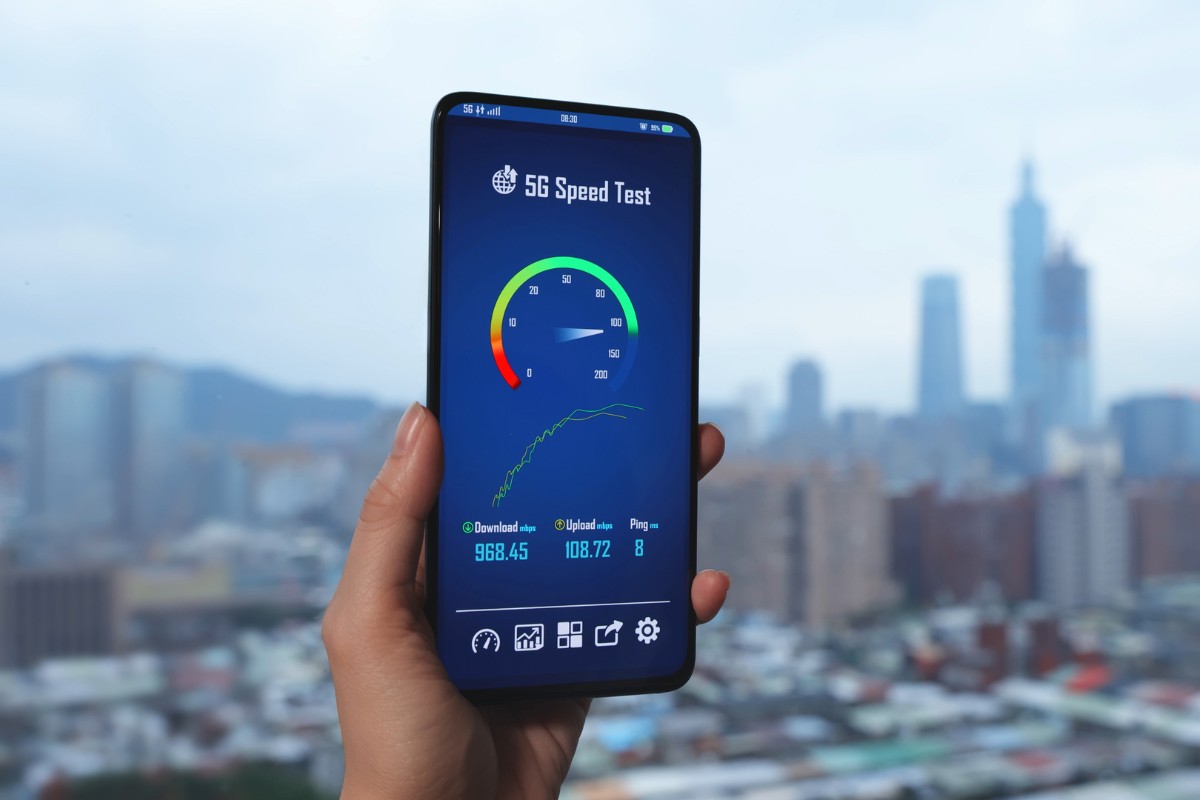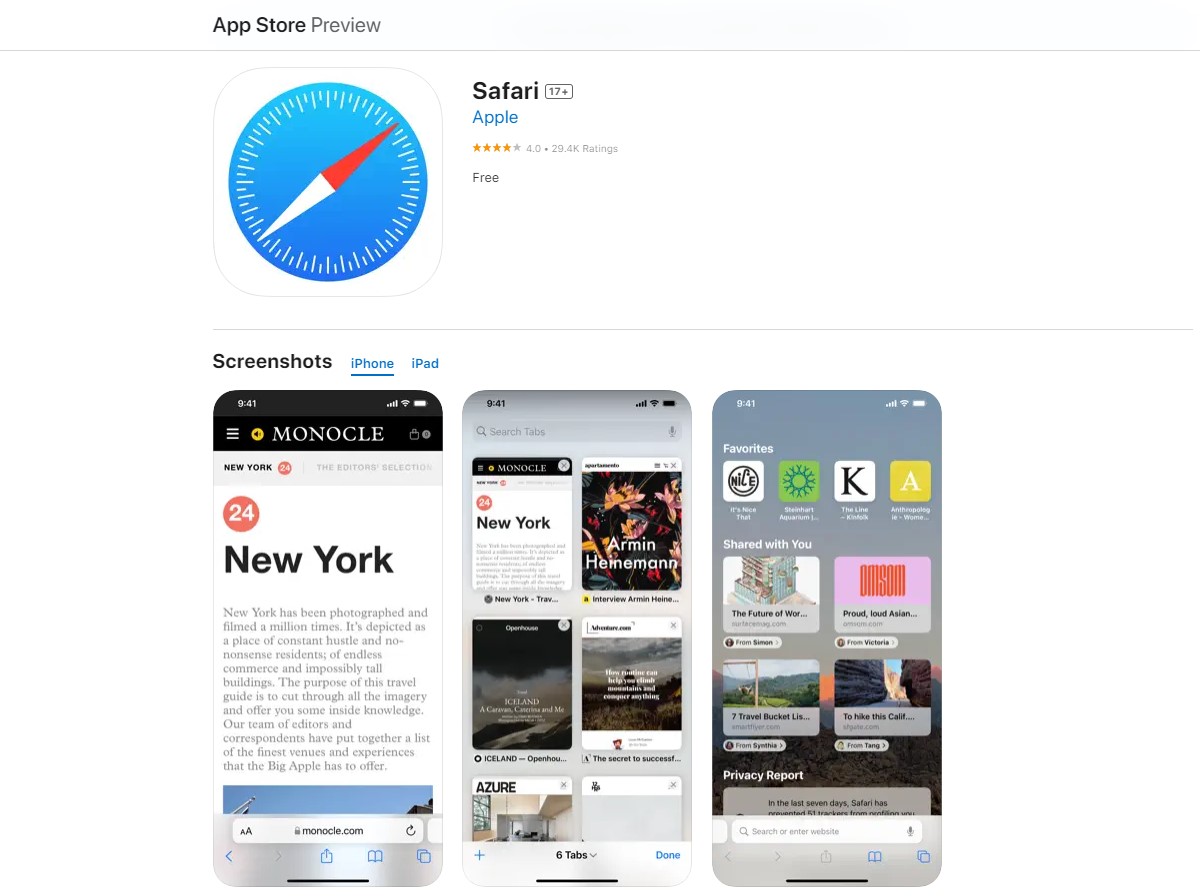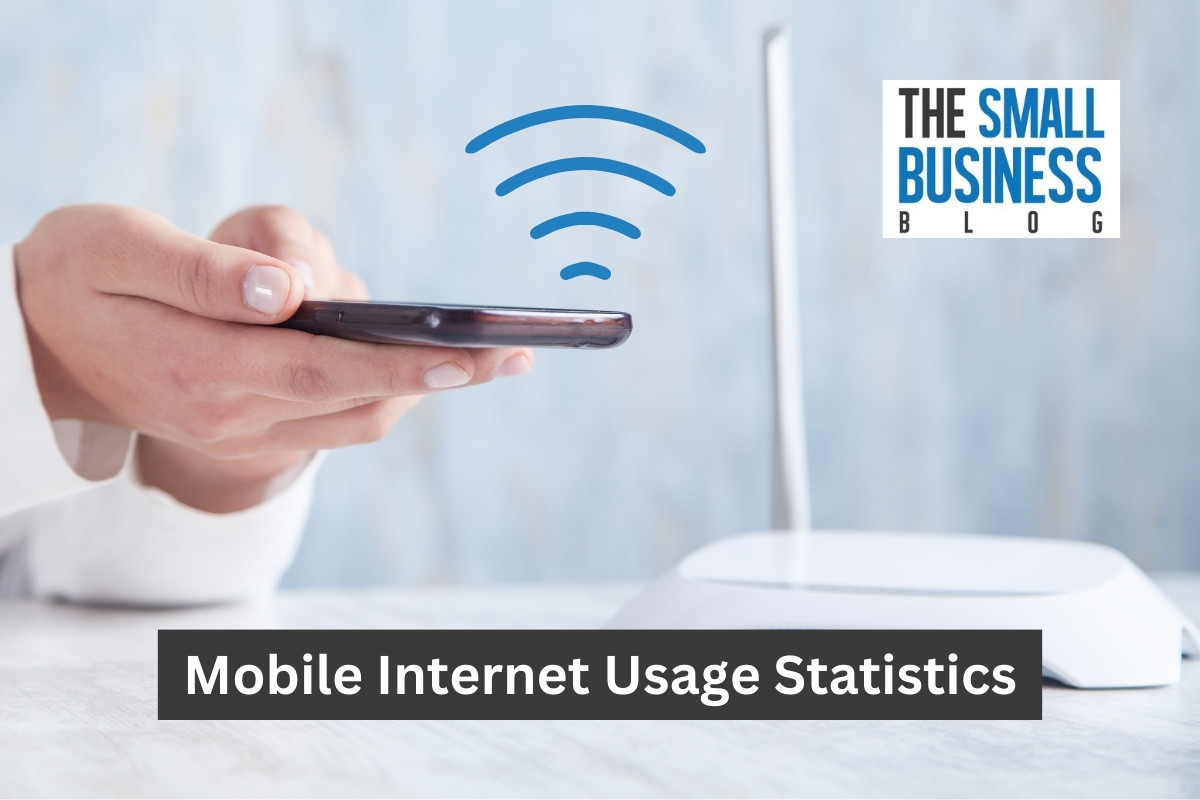The internet started over fifty years ago.
Of course, when it was launched it looked nothing like the internet we all know and love today.
Although it may not always seem like it, the internet and how we access it is constantly evolving.
Perhaps one of the biggest changes in modern times is how we access the internet.
As the following mobile internet usage statistics will show, mobile access is becoming the most popular way to access the internet.
Generation Z has never known a time before the internet, it has become a fixture of modern life, a valuable resource, and one that is so easy to access anywhere with a smartphone.
In fact, the advancements in cellphone technology are the biggest reasons why mobile internet access is now more popular than desktop.
The average mobile device today is more powerful than many 2-3 year old desktop computers.
Let’s take a look at the latest statistics.
Post Contents
- 1 Key Statistics
- 2 Top Mobile Internet Usage Statistics in 2024
- 2.1 1. As Of 2023 55.5% Of Web Traffic Originates Via A Mobile
- 2.2 2. 92.3% Of Internet Users Access The Web Via A Mobile
- 2.3 3. Africa Has The Highest Volume Of Mobile Traffic
- 2.4 4. 68% Of People Play Games On Their Mobile Phone
- 2.5 5. 79.1% Of Indonesian Residents Shop With Their Mobile Phone
- 2.6 6. Estimates Suggest There Will Be Over 1 Billion 5G Connections By 2025
- 2.7 7. Mobile Phone Subscriptions Have Risen Every Year
- 2.8 8. Qatar Has The Fastest Average Mobile Internet
- 2.9 9. In The US, Apple’s Safari Is The Most Popular Mobile Browser
- 2.10 10. ECommerce Via Mobile Is Set To Reach $2.2 Trillion In 2023
- 2.11 11. Mobile Internet Users In The US Are Predicted To Reach 287.1 Million In 2023
- 2.12 12. 75% Of Americans Use Their Phone To Check Emails
- 2.13 13. 218 Billion Apps Were Downloaded In 2020
- 2.14 14. Millennials Are Driving Increases In App Downloads
- 2.15 15. Mobile Internet Access Has A Higher Bounce Rate
- 3 Summing Up
Key Statistics
- As of 2023 55.5% of web traffic originates via a mobile device
- 92.3% of internet users access the web via a mobile device
- Africa has the highest volume of mobile traffic
- 68% of people play games on their mobile phone
- 79.1% of Indonesian residents shop with their mobile phone
- Estimates suggest there will be over 1 billion 5G connections by 2025
- Mobile phone subscriptions have risen every year
- Qatar has the fastest average mobile internet
- In the US Apple’s Safari is the most popular mobile browser
- Ecommerce via mobile is set to reach $2.2 trillion in 2023
- Mobile internet users in the us are predicted to reach 287.1million in 2023
- 75% of Americans use their phone to check emails
- 218 billion apps were downloaded in 2020
- Millennials are driving increases in app downloads
- Mobile internet access has a higher bounce rate
Top Mobile Internet Usage Statistics in 2024

1. As Of 2023 55.5% Of Web Traffic Originates Via A Mobile
Desktop internet access was considered faster and easier, in many cases this was because it was hardwired to the internet.
However, as the quality of smartphones improved, accessing the web via mobile became a more realistic option.
In 2016, mobile internet access overtook desktop access for the first time.
That’s when 50.7% of internet access came via a mobile.
Fast forward seven years and the trend has continued.
As of August 2023, 55.5% of internet traffic comes from a mobile device.
The trend is clear, although it is perhaps taking longer than expected.
In 2012 mobile access represented just 10.88%.
By 2017 it reached 54.09%, effectively a fivefold increase in five years!
The average for 2023 is 56.69% access via mobile, barely more than a 1% rise in seven years!
It’s likely mobile internet access will continue to grow, but this slowdown reflects that sometimes the desktop is a better option.
(Oberlo)
2. 92.3% Of Internet Users Access The Web Via A Mobile
This may sound confusing.
However, the statistic 92.3% of internet users access the web via a mobile simply shows how many people use their mobile to get online.
Many of these people will also go online via a desktop, depending on what they are doing online.
Alongside 92.3% accessing the internet via mobile, 65.6% of people access it via a desktop, and 91% of users access it via a smartphone.
Yes, some people access the internet via a traditional cell phone!
Connected televisions are also becoming a popular way of getting online, 31.9% of people have done this and 12.7% of people have accessed the web via a game console.
Smart home devices are used by 15.4% of people and a tablet provides access for 27.3%.
What the report doesn’t show is how many different devices the average person uses to access the internet.
Almost everyone uses a mobile phone but only 59% of people use a desktop.
Is that 59% contained within the 92.3% of mobile phone users?
(StatCounter)
3. Africa Has The Highest Volume Of Mobile Traffic
This may seem surprising at first as Africa isn’t the area you would associate with the latest technology and reliable high-speed mobile internet connections.
However, the simple fact is that 69.13% of Africa’s internet traffic comes from a mobile internet connection.
The highness of this figure is likely connected to Africa currently being unable to supply broadband across the region.
The mobile network becomes the practical alternative.
The region with the least mobile traffic is Oceania, just 39.51% of their internet activity originates from a mobile device.
Interestingly, Asia is close to Africa in terms of mobile coverage with 65.2% of traffic coming from mobile internet.
Both regions are above the global average of 56.89%.
South America is actually closest to the global average with 51.47% of traffic coming from mobile internet.
Europe is just below at 49.19% and North America sits in fifth place with 48.49%.
(Statista/Stat Counter)
4. 68% Of People Play Games On Their Mobile Phone
The modern mobile phone is an ingenious device, capable of connecting people across the globe, allowing users to access almost any information instantly, and simply keeping people up to date on social media.
Yet, despite the array of things that can be done with a modern smartphone, 68% of people use it to play games!
Of course, they use it for other activities as well.
Playing games is the most popular use, but only just.
Impressively, 67% of phone owners use them to listen to music, and a further 63% connect to social media via their phones.
Phones are used for a huge array of daily activities, such as ordering products and paying for them online, or accessing a bank account.
They are used to book food deliveries and are even the preferred way to read a newspaper or magazine by 33% of people.
In fact, just 3% of people say they don’t use their phone for anything other than calls and messages.
(Statista)
5. 79.1% Of Indonesian Residents Shop With Their Mobile Phone
Over half the global population have shopped online or regularly do so.
In many cases, finding items, comparing them, and choosing the right one, is much easier when done online.
The global average for shopping online is 55.4% of the population.
However, several countries have significantly higher figures.
Indonesia takes the crown with an impressive 79.1% of residents shopping online.
Thailand follows closely behind with 74.2%.
The Philippines, Malaysia, Saudi Arabia, China, Taiwan, and even Vietnam all have between 60-70% of the population shopping online with their mobile device.
Even South Korea, India, and Singapore are above the global average.
Interestingly, all these countries are in Asia.
(Statista/Stat Counter)
6. Estimates Suggest There Will Be Over 1 Billion 5G Connections By 2025

Broadband used to be the gold standard for the internet.
Today, many homes have fiber which is much faster and more reliable.
However, it is still more convenient to connect online with your mobile device.
Naturally, a mobile network sprung up to accommodate this.
While 3G was acceptable, and 4G good, 5G is proving to be a much better, and therefore more popular option.
Current estimates suggest there will be over 1 billion 5G connections by 2025 and that China will have three times more 5G connections than anyone else.
The current predictions suggest China’s 5G connections will be greater than all the connections in the US, UK, France, Canada, Germany, Japan, and South Korea!
The latest GSMA survey suggests China will have 866 million 5G connections in 2025, the US will have just 247 million, and Japan 138 million.
Other countries won’t even reach the 100 million mark.
Germany is predicted to have 68 million connections, South Korea 45 million, and the UK 42 million.
France and Canada trail the pack with 35 million and 20 million respectively.
(GSMA)
7. Mobile Phone Subscriptions Have Risen Every Year
Look around almost any room and you’ll see the majority of people have a mobile phone.
In fact, most people will already be using it.
That’s how popular mobile phones have become.
They are simply a feature of modern life and, to many, a necessity.
What is perhaps surprising is that the number of mobile phone subscriptions continues to rise every year, and has done so since 1993.
Subscriptions grew faster in the earlier years.
By 1996 100 million people had subscribed to a mobile contract.
Skip forward six years and, in 2002 subscriptions reached 1 billion.
Just three years later they increased by a billion and, in the next two years, another billion.
By 2007 there were 3 billion mobile subscriptions.
In just one year, subscriptions grew another billion.
2008 was the fastest-growing year on record.
Subscriptions continued to climb by around one billion every couple of years until 2015.
Since then subscriptions have slowed.
Between 2015 and 2019 subscriptions grew from 7 billion to 8 billion.
What’s particularly interesting is that there are only 8 billion people on the planet, how much more can subscriptions grow?
It is worth noting that there are currently 4.32 billion active mobile internet users and 4.66 billion active internet users.
This suggests most internet users access the web via a mobile on at least some occasions.
(DataReportal)
8. Qatar Has The Fastest Average Mobile Internet
While the US is technologically more advanced than most other nations, several of these statistics reveal that it’s not top when it comes to mobile internet usage.
Surprisingly, the US doesn’t even feature in the top ten countries with the fastest mobile internet speeds.
This study was done in April 2023.
It found that Qatar had an average mobile internet speed of 189.98 Mbps, significantly more than the United Arab Emirates in second place, with 175.34 Mbps.
Norway, Denmark, and the Netherlands all make the list on behalf of Europe.
They offer 131.16 Mbps, 118.83 Mbps, and 109.13 Mbps respectively.
Interestingly, the Netherlands is at the bottom of the top ten countries with the fastest average mobile internet speeds.
China and South Korea manage to squeeze above it with 110.1 Mbps and 110.59 Mbps.
(Statista)
9. In The US, Apple’s Safari Is The Most Popular Mobile Browser

There are several good mobile internet browsers which can be used to access the internet on the go.
A dedicated mobile browser is generally the best option as it is better configured for the size of a mobile screen and its processing power.
However, while Google is an extremely popular choice, as is Microsoft Edge and Firefox, the leader in the US market is Apple’s Safari.
Naturally, anyone with an Apple iPhone will use Apple’s Safari browser.
It’s preloaded on the phone, easy to use, and secure. This is a big part of why Safari is so popular.
Currently, 47% of all US smartphones are iPhones.
Almost all of these people use Safari.
While that means 53% of people are using non-Apple products, they have an extensive choice of browsers.
In other words, it’s much harder for a non-Apple browser to become the most popular mobile internet browser.
(Oberlo)
10. ECommerce Via Mobile Is Set To Reach $2.2 Trillion In 2023
Improved mobile internet connectivity, combined with apps and websites designed for mobile screens, has made it easier and more practical to shop online.
For anyone who owns an eCommerce business, this is great news.
It’s increasingly common to use mobile internet and a smartphone to order almost anything.
That has resulted in mobile eCommerce now being responsible for 60% of all eCommerce sales.
That means, just 40% of online sales are done via a desktop with a fixed internet connection!
In 2023 eCommerce sales via mobile are expected to reach $2.2 trillion.
However, by 2027, this figure is predicted to increase to $3.4 trillion.
To show how big a revolution this is, in 2018 just $982 billion worth of eCommerce sales originated via mobile internet.
It is worth noting that the global pandemic boosted mobile eCommerce sales.
They jumped from 1.16 trillion in 2019 to $1.53 trillion in 2020.
This was followed by 1.92 trillion in 2021 and $1.94 trillion in 2022.
The climb continues.
(Statista)
11. Mobile Internet Users In The US Are Predicted To Reach 287.1 Million In 2023
A few years ago there were approximately 123 million Americans using mobile internet.
That was just over a third of the population.
The latest figures from Statista predict there will be 287.1 million Americans using mobile internet by the end of 2023.
That’s the equivalent of 87% of the people living in the US and a testimony to how important mobile phones and internet connections have become to daily life.
Of course, mobile internet is being upgraded and 5G will soon cover the entire country.
To use this latest version of mobile internet many people will have to replace their phones.
That’s great for phone manufacturers and mobile internet providers!
As of 2021, roughly half the global population owned a smartphone.
That’s approximately 4 billion people.
The majority of these need to change their phone to take advantage of 5G connections.
Of course, 5G isn’t mandatory, but it does offer the fastest mobile connection yet.
(Statista)
12. 75% Of Americans Use Their Phone To Check Emails

The mobile internet usage statistics show that an increasing number of people are shopping online via a smartphone and a mobile connection.
However, according to the latest research, 75% of Americans primarily use their phone to check their emails.
This is the feature that they consider to be most important in their phone.
All the other features are additional benefits.
Of course, checking emails is significantly easier today thanks to improvements in mobile connection technology.
The research also showed that while emails are the predominant reason to get a smartphone, the average American will spend approximately 70% of their media and entertainment time on a smartphone.
This usage is becoming so high that many people are starting to favor smartphones and other mobile devices instead of standard television.
(Blue Corona)
13. 218 Billion Apps Were Downloaded In 2020
Take a look in the Google Play Store or the Apple App Store and you’ll see millions of apps.
There is one for almost anything you can think of.
Despite this, more apps appear daily, meaning it’s always worth having a look at the latest apps to see if they will be of use to you.
According to the latest reports by Statista, 218 billion mobile apps were downloaded in 2020.
That number was just 178 million in 2017.
App numbers are growing and, as people become more dependent on phones and mobile internet connections, the number of app downloads is increasing.
Estimates suggest mobile app downloads will reach 300 million by the end of 2025.
The most popular app downloads are gaming apps.
There is always something new to try and people love to game, especially when it’s free.
According to Apple statistics, 25% of the apps on the App Store are classified as games.
(Statista)
14. Millennials Are Driving Increases In App Downloads
Apps aren’t just fun creations for individuals, they have become an essential part of business marketing.
An app makes it easier to visit a preferred online store, order, and even track the process of an order.
Millennials appear to have become particularly fond of apps.
The latest studies show that 35% of Millennials have the Amazon app and can’t live without it.
That’s not the only essential app this generation needs.
30% of Millennial respondents suggested Gmail was their most essential app.
In the same survey, 29% felt Facebook was essential and 16% can’t live without the YouTube app.
The bottom line is simple, millennials are committed to mobile apps and are a driving influence in increasing the number being downloaded.
It’s worth noting that 18-24-year-olds use mobile apps the most, they spend over 3 hours a day on the apps.
In contrast, people aged over 55 spend less than 2 hours daily on mobile apps.
(Business Insider)
15. Mobile Internet Access Has A Higher Bounce Rate
Mobile internet is generally used in conjunction with a smartphone.
That means the user is likely to be on the go, perhaps commuting or simply spending five minutes waiting for the children to finish school.
In other words, people generally have less time online when using a mobile internet connection and are interested in making the most of that time.
That’s the reason why sites accessed via mobile internet bounce rates are higher.
People simply don’t have the time or inclination to stay on a page unless it captures their imagination.
As of 2020, the bounce rate for mobile internet was ten times higher than desktop internet access.
Interestingly, conversion rates are also affected.
Mobile internet customers convert at a rate of 1.32%.
Those arriving via a desktop connection have a 3.82% conversion rate.
(WebFX)
Summing Up
The most obvious takeaway from these mobile internet usage statistics is that mobile internet is still growing in popularity.
As the speed and reliability of mobile internet continues to improve, it’s likely that more and more people will use this as their only way of getting online.
However, there will always be some who prefer accessing the internet via a fixed connection. In some cases, this is still the better option.
Over 60% of the global population have a mobile phone and a mobile internet connection. However, it’s the developing nations which are pushing hardest for better mobile internet connections. It’s simpler than installing fiber across an entire country.
No one can say for certain what the future holds, but it seems likely that mobile internet is going to play an increasingly important part in it.






























